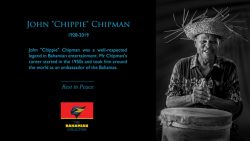An estimated 27,000 people or 9.3 percent of the country’s population represent the face of Bahamian poverty, according to a report commissioned by government officials.
Minister of Social Services and Community Development Melanie Griffin revealed those details in the House of Assembly on Wednesday, while giving a brief overview of The Bahamas Living Conditions Survey 2001.
The first of its kind for the country, the 188-page survey determined that the minimum amount of money needed to purchase adequate low-cost meals with allowances for non-food needs was estimated at $7.84 per person, per day.
This translates into an annual poverty line of $2,863 per person.
This figure is slightly higher than the recent estimate of $2,752 for Barbados and significantly lower than the U.S. estimate of $4,525.
The poverty line represents the minimum expenditure necessary for an individual to satisfy basic needs over a specific reference period, officials say.
The cost is estimated in two stages, the first takes into account the minimum expenditure needed to purchase a nutritionally adequate diet, while the second takes into account the minimum required cost of non-food items like clothing and shelter.
The sum of these two estimates equals the poverty line. According to local statisticians, 40 percent of the budget is spent on housing and 27 percent on food.
The survey indicates that for poor households, this proportion is higher, largely because a higher proportion of the budget is spent on food.
The survey results were based on eight inter-related issues – demography and migration, poverty, household expenditures, health, education, employment, access to community services and social programmes and housing.
Slightly more than 2,000 households were randomly selected throughout the country to participate in the survey.
According to the survey, by regional standards, the food ratio amongst poor Bahamian households is extremely low.
Non-poor households are more likely to own their home (58 percent), whilst poor families are more likely to rent (41 percent), live rent free (10 percent) or rent a government home (six percent).
Based on the results of the survey, about 95 percent of non-poor households either own or rent their homes privately, compared to only 82 percent of poor households.
The survey, which was conducted between late 2001 and early 2002, further revealed that nearly 75 percent of all poor Bahamian households have five or more members.
Single female parents accounted for 45 percent of all poor households and children 14 years and younger made up 50 percent of the nation’s poor.
“The Bahamas is characterized by extreme regional disparities in population distribution, which mirror large regional disparities in living standards,” Minister Griffin told her parliamentary colleagues, citing excerpts from the survey.
“Results indicate that residents in New Providence and Grand Bahama fair much better than those in other islands and while there are more poor persons in these islands, there is more extreme poverty in the Family Islands.
According to the study, the standard of living varies greatly amongst nationalities with Haitian nationals being the poorest immigrant groups. In fact, it was found that 84 percent of all Haitians were within the three poorest quintiles.
“Inequality is probably a direct consequence of one of the country’s key development strategies: providing a tax haven for wealthy expatriates,” the survey said.
“-Highly unequal societies may be more prone to crime, with direct economic consequences for investment and business confidence. Whilst inequality has not presented an economic burden to date, extreme inequality could lead to social unrest, which could negatively affect the country’s economy.”
Looking ahead, Minister Griffin said the survey results clearly show the areas that demand attention if The Bahamas is to improve its overall conditions.
“There is need for an in-depth study of the survey results by all government and private sector agencies to determine how the matters of concern and issues affecting The Bahamas can be appropriately addressed in the context of our geographic nature and resources,” she said.
She said The Bahamas has made significant progress in promoting the social well being of its people and currently has a range of programmes in place to assist the poor and vulnerable.
But the study, she added, clearly shows the need for modification and the government regards this as the opportune time to reform the social safety net in order to further enhance the social landscape, improve the quality of life of Bahamians and make the country’s social programmes more applicable to the 21st Century.
Officials hope to conduct a similar study late next year.
By: Macushla N. Pinder, The Bahama Journal



